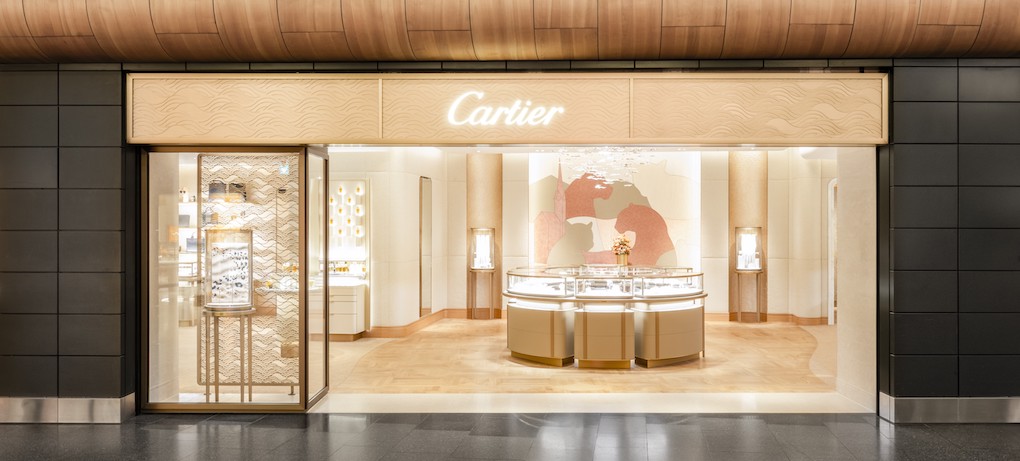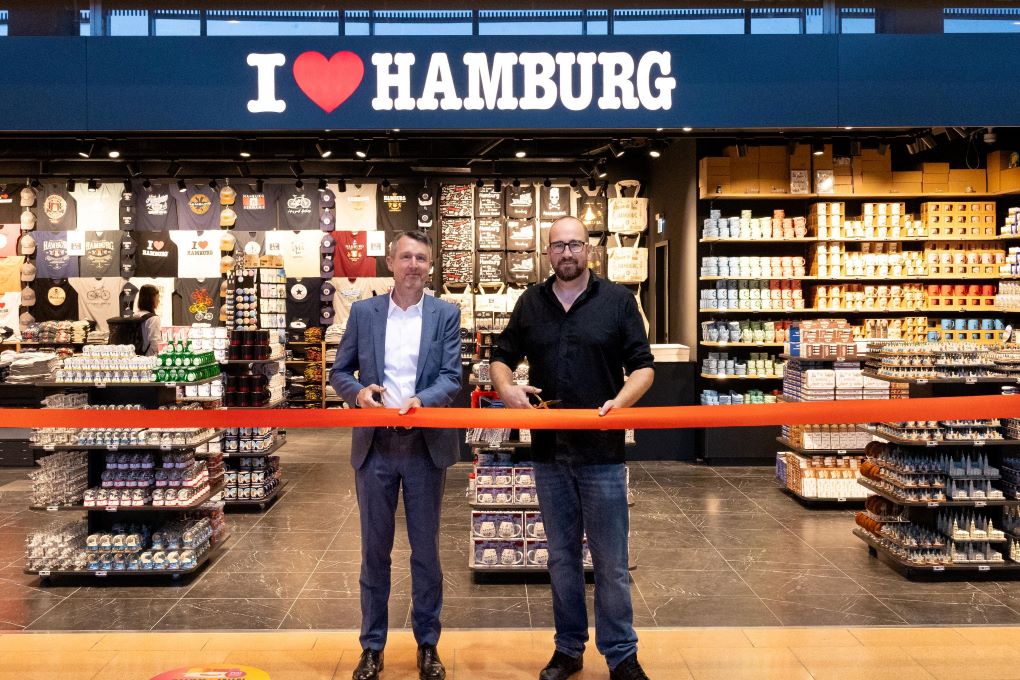UK. The Moodie Davitt Report visited London Heathrow Airport in late April for the opening of a flagship InMotion store from WHSmith in Terminal 5. We spoke to Heathrow Retail & Property Director Fraser Brown during our visit for his view on WHSmith’s InMotion investment, the resurgence of retail and F&B at the airport and the challenges that lie ahead as the UK’s leading travel hub gets set for a busy Summer.
Late last month, London Heathrow Airport reported that its pandemic-related losses had exceeded an eye-popping £4 billion (US$5 billion). No surprise then that Retail & Property Director Fraser Brown tempered his increasing optimism with some caution about the travel hub’s revival when he chatted with The Moodie Davitt Report Senior Editor Mark Lane in the airport’s once again lively Terminal 5.

“We are still facing headwinds,” says Brown, pointing to the Ukraine crisis, uncertainty over travel restrictions, the threat of more COVID-19 variants, soaring aviation fuel prices and surging living costs. “But the place is busy and you can feel a real energy about Heathrow again, which is great to see. Sadly, it’s not yet at a level where we’re profitable.”
Nevertheless, Brown describes Heathrow’s position as stable, and cheerfully points to the T4 reopening in June, which will bring the UK’s number-one airport back to full capacity. He says his team is busy behind the scenes working with operators to give passengers a good choice of retail and F&B in the terminal – which accounted for about 15% of pre-pandemic Heathrow traffic – as soon as it is up and running.


“After a very busy Easter, where I think we surprised a lot of passengers with how smooth their passage was through the airport, we’re gearing up for Summer,” says Brown. “With our recruitment drive in full swing, by the peak of the season we anticipate Team Heathrow will number about 12,000 including a lot more security officers and we’re very excited about that. That will make sure that we’re ready to serve passengers in the way that we aspire to.”
Asked to assess the strength of the retail and F&B scene at Heathrow as it emerges from the difficulties of the COVID-19 crisis, Brown replies: “I’m not sure I would use the word ‘crisis’, but we were certainly in a period of unprecedented difficulty. I’m proud of how we dealt with our [commercial] partners during this period as an airport and the way we fronted the challenges with honesty and integrity.
“We had to have some very difficult conversations and our relationships are stronger for it. I think we’re in a much better position today and not just because passengers are coming back.”
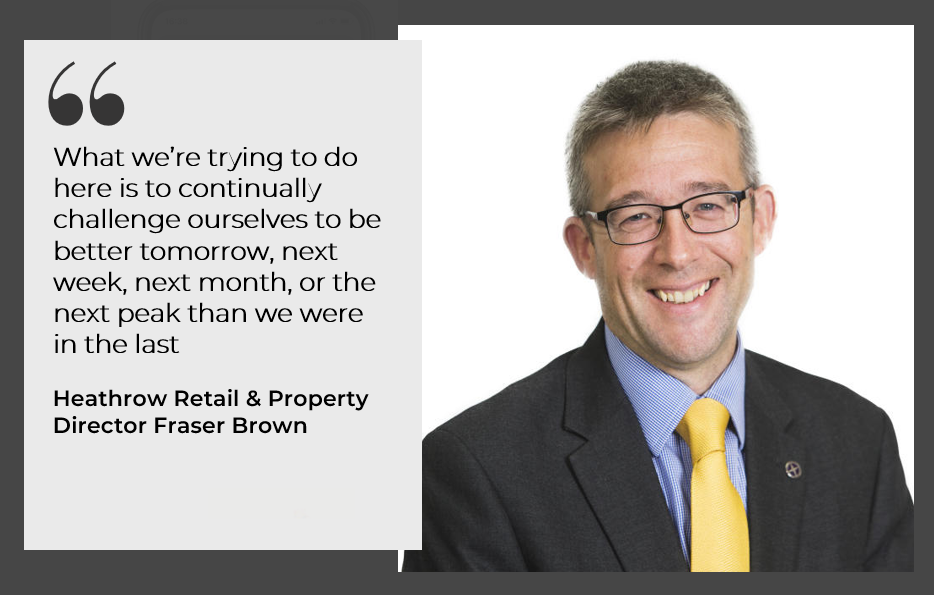
A full retail offer
Several retail and F&B tenants inevitably departed from the Heathrow commercial line-up as tough business decisions were made during the pandemic. Brown and his team have worked hard to find replacements as necessary over the past two years. He believes those efforts have been successful to the extent that no significant gaps remain in the retail offer.

“There are a few units to fill,” Brown says. “And obviously there’s a lot of commercial businesses to restart as we work towards reopening Terminal 4, which has been mothballed for a long time now. But we have brought some great new retail and F&B partners to the airport in recent times.
“I don’t think we have any particular gaps in our [retail] offer or that we’re missing categories. And I don’t think there are any particular brands we are regretting that we don’t now have at the airport.”
He adds: “Obviously, we will keep the mix of retailers and F&B tenants under constant review and we’ll continue to evolve the offer. I’d much prefer continual evolution than revolution – revolution implies that you’ve not done something well for a few years, and you therefore need to make a big step change.

“What we’re trying to do here is to continually challenge ourselves to be better tomorrow, next week, next month, or the next peak than we were in the last. That’s the mentality that my team and I work with, and that also applies I think to the brands and the retailers we have here.”
The most significant new tenant in terms of scale, and one which looks set to make a major contribution to evolving the Heathrow retail offer, is a suite of smart new stores from WHSmith consumer electronics brand InMotion.
The retailer has taken over eight units from previous incumbent Dixons, which vacated Heathrow exactly a year to the day before we spoke to Brown.
“We were sorry to lose Dixons, which had been a longstanding retail partner,” he comments. “But we very quickly switched to a plan B, which was to do a market test and tender the sites that were available. We got some great offers. That was testament, I think, to the way that we pitched it, but also to the attractiveness of Heathrow as an airport.

Four retail pillars
“Ultimately, we selected WHSmith and InMotion because we believe they were the strongest not just in financial terms but against the four pillars of retail that we hold dear.”
Brown explains that these pillars are in-store experience, intelligent use of retail space, range and price, and digital offer.
“I’m really proud of what we see today here in Terminal 5 with InMotion’s global flagship store,” he says. “You see great experiential areas in the space, you see an engaged group of colleagues, many of them ex-Dixons, ready to serve our passengers, which is great. And you can see them delivering on that digital experience, space and offer.”
The stated reason for Dixons’ Heathrow withdrawal was the UK government’s highly-controversial removal of tax-free advantages from certain airport retail categories, including electronics. WHSmith’s bold move to take over and invest millions of pounds therefore might be considered surprising, given the potentially huge resultant revenue loss from airport consumer electronics stores.
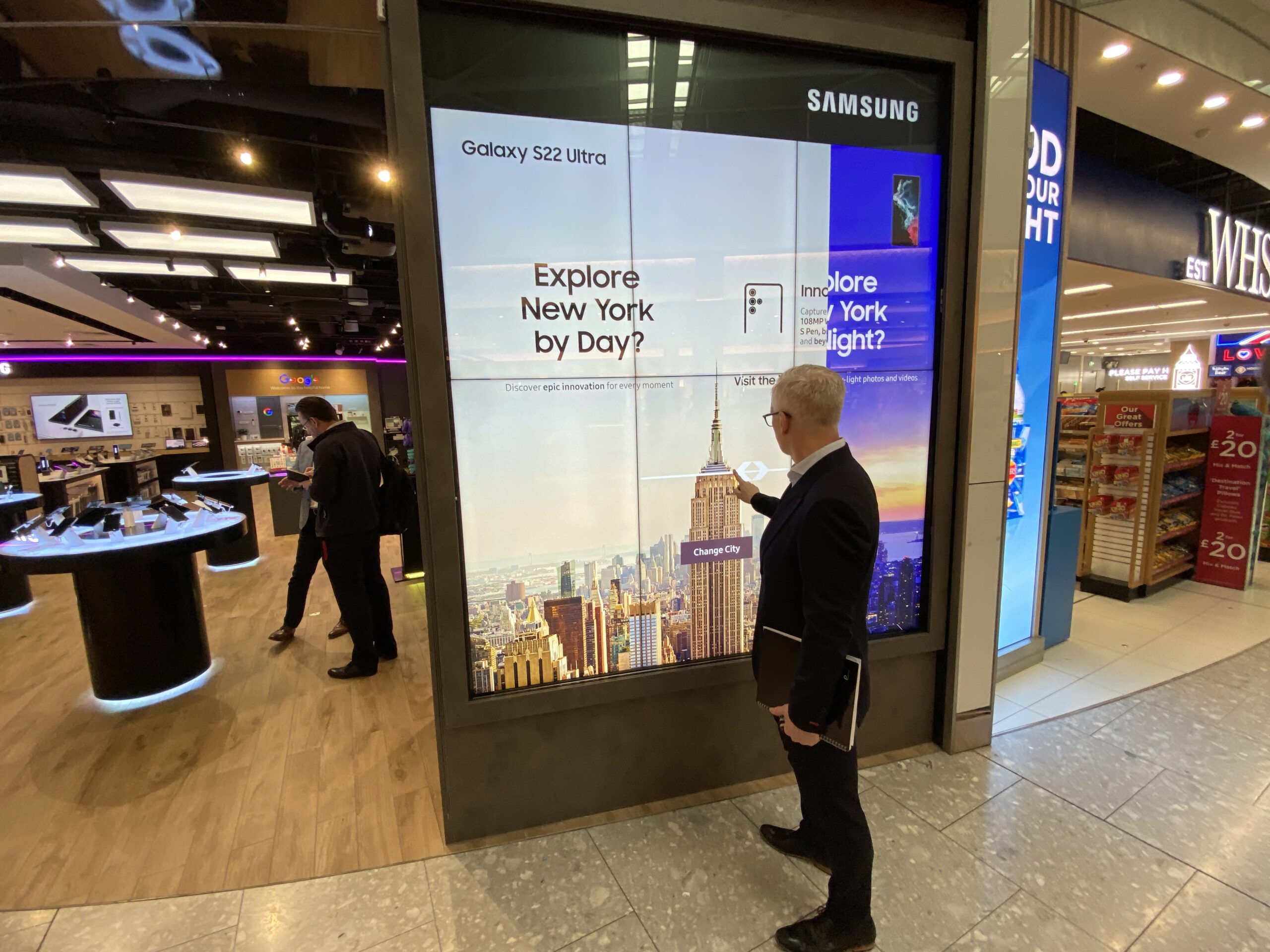
Government’s economic vandalism
So how can passengers expect to get value from the category, and can WHSmith and Heathrow derive meaningful returns?
Brown replies: “There is no doubt that this move is a piece of economic vandalism for travel retail on behalf of the UK government. It is a big blow they have dealt us. I do not expect that the InMotion team will sell as much of the higher-end aspirational tech as the Dixons team would have been able to before these unwelcome new rules were brought in.
“I would reiterate that what the government has done is wrong. We’ve not seen the full impact of that yet. The reality for both the InMotion business and for us as an airport operator is that these sites will be less profitable, there is no getting away from that.
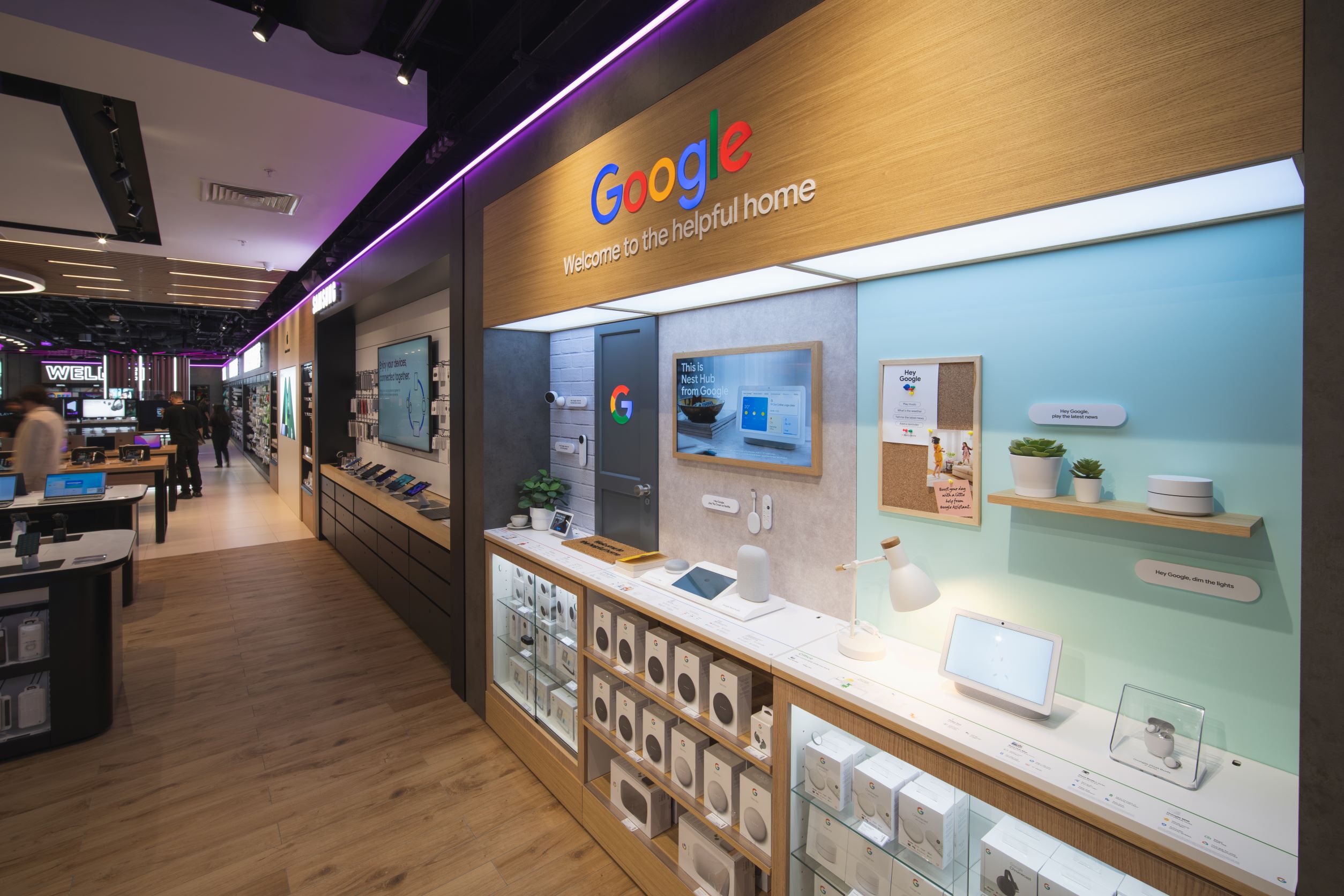
“InMotion may well be able to make that up because they’re opening stores elsewhere in Europe. But that will not help jobs and the economy in the UK or Heathrow as a campus. COVID so far has clearly had a much bigger impact on travel retail than this tourism tax has, but we will see a lower spend and that will bite.”
Nevertheless, Brown retains belief in the category and what it can offer to Heathrow shoppers. “I think we’re doing the very best with InMotion to mitigate the fact that the price is not as attractive as it was before. That’s by having great products, not least from their relationship with the likes of Apple, Google and Samsung, and the great service passengers will see in-store.
“Then there are the experiential elements that you see in the new flagship store, for example. Consumers are able to see, touch, interact with and really immerse themselves in some of the products. That will clearly help us attract people in. It is not just about price.
“So by having that rounded offer – great product, delivered by great colleagues, experientially, in a good space – that’s a very compelling proposition. It will allow both InMotion and ourselves to be successful, albeit with this additional weight on our shoulders of having to have the VAT at a high street level.”

A great airport-retailer partnership
Brown also underlined the value of Heathrow’s wider relationship with WHSmith, a retail partner which will be operating more than 5,000sq m of space across 38 stores (including pop-ups) at the airport by the time Terminal 4 reopens.
“WHSmith was our first retailer in 1946 when its first retail space opened on the airport site, so we’re now into the 76th year of our partnership. That’s an incredibly long-standing relationship which has stood the test of time because we and WHSmith as a retailer have evolved.
“WHSmith’s confidence in Heathrow as a retail destination has been underlined by the huge investments the company has made in its estate here with a series of refurbishments and new stores over the past two years.”
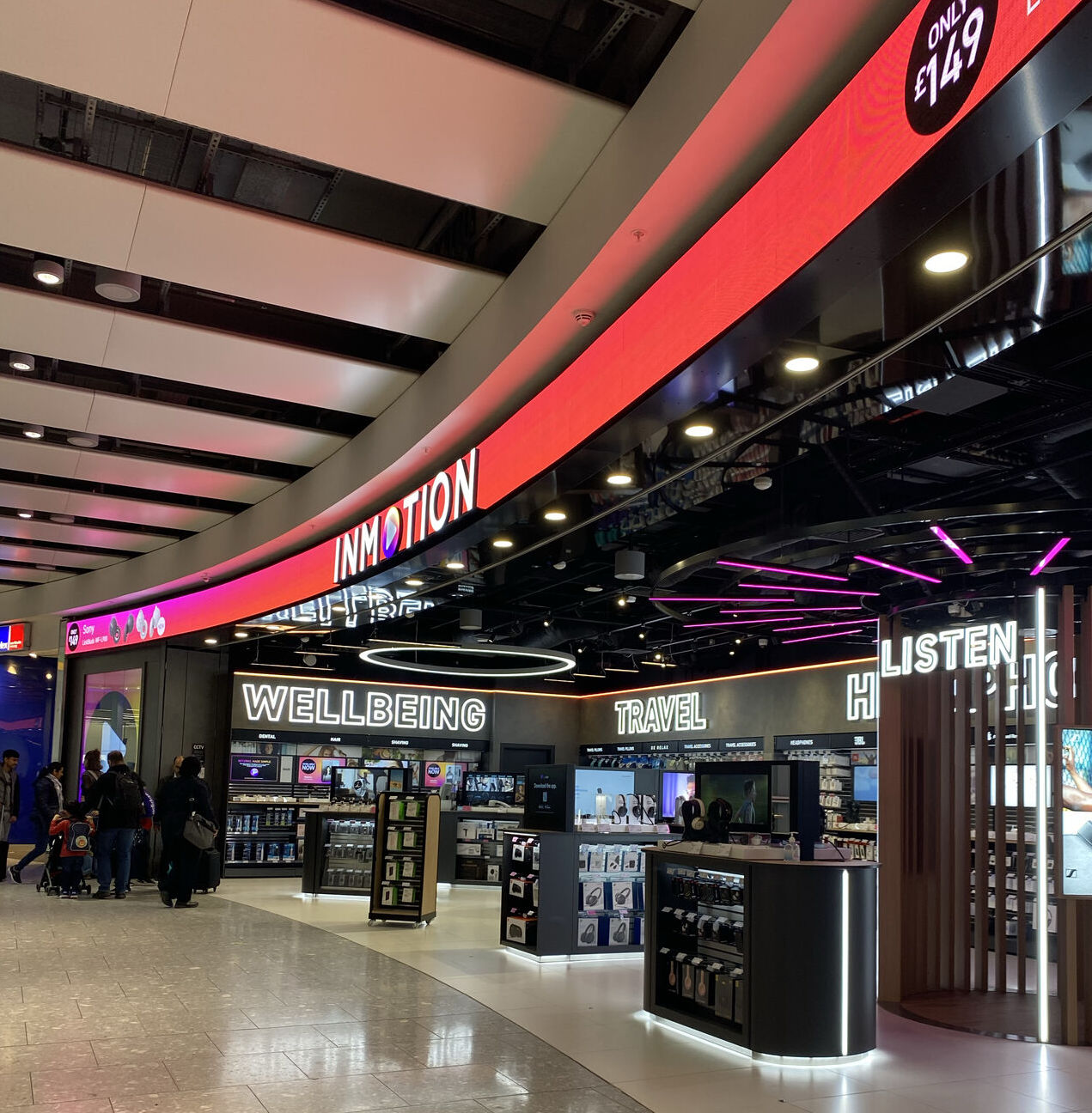
WHSmith’s continuing commitment and investment at Heathrow bodes well for the airport’s future retail revenues, but for now the priority is simply to return to profit. The airport company is predicting that it will serve an estimated 52.8 million passengers across 2022, a significant uplift on the 45.5 million forecast earlier in the year. The higher number represents approximately 65% of 2019 traffic levels.
Reflecting on this statistic, Brown says: “Our own government lifted the major travel restrictions more quickly than we expected. But the fact remains that about 80% of the markets that we serve still have a requirement or additional request relating to vaccinations, testing and so on over and above where we were in February and March of 2020.
“So, this is not now the post-COVID ‘free for all’ as it were – there’s a long way to go for us to become profitable again. The Heathrow business is generating cash, but it’s not yet generating enough to serve the debt that we have. We’ve got to steer the ship carefully and prudently. We’re not out of the woods yet.”
Read our recent interview with WHSmith Travel Managing Director Andrew Harrison about his company’s £18 million (US$22.6 million) investment in opening 30 InMotion stores across UK airports here.









